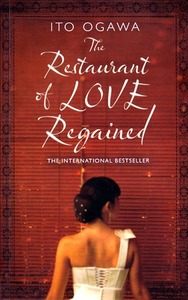Take a photo of a barcode or cover
Questo libro è il risultato di uno dei miei primi scambi, non conoscevo l’autrice o la casa editrice ma la trama era piuttosto interessante, anche se con un po’ di miele in più rispetto ai miei soliti gusti e poi ero molto curiosa di conoscere nuovi autori giapponesi quindi mi è sembrata un’opportunità ghiotta per fare nuove conoscenze. Grosso errore.
Sono molto pignola per quanto riguarda le traduzioni, soprattutto degli autori giapponesi, di questa casa editrice ho sempre sentito parlare bene ma leggendo questo libro mi viene da pensare che o la prosa della scrittrice ha una varietà di vocaboli pari a quella di un ragazzo delle medie oppure è stata tradotta veramente molto male. Non perché la scrittura semplice in sè sia un fattore negativo anzi, da un libro così leggero non mi aspettavo certo una prosa complessa, ma al linguaggio semplice si affianca un stile evocativo che non lega per niente alle parole e rende il complesso totalmente disarmonico e pacchiano.
Andando avanti con la lettura mi sono resa conto che lo stile di scrittura non è la sola cosa che stona in questo libro. Alla fine sono stata costretta prima a saltare sempre più pagine e infine ad abbandonare a circa 30/40 pagine dalla fine. Purtroppo la storia, già brutta dall’inizio, è entrata in un vortice di castronerie, una peggiore dell’altra, eventi totalmente casuali e assurdi che non portano eventi e/o personaggi da nessuna parte e visto che soprattutto in periodo esami non ho molto tempo da dedicare alla lettura ho voluto evitare di continuare a sprecare il mio tempo con un opera insulsa come questa.
Come ho accennato lo svoglimento della trama è completamente paradossale, la quarta di copertina da un forte peso al ruolo che i piatti preparati dalla protagonista hanno nel cambiare le vite delle persone, ma di queste persone non si parla praticamente niente. Vengono citati una quantita spropositata di personaggi secondari, clienti appunto del “Lumachino” e in alcuni casi del locale notturno della madre della protagonista, ognuno di loro si porta dietro una storia potenzialmente interessante, in cui la cena in ristorante poteva essere il fulcro del cambiamento ed invece l’autrice si è limitata a fare un minestrone di storie in cui nessun personaggio ha un importanza superiore alla mezza pagina.
La superficilità dei personaggi secondari sarebbe stata comprensibile visto l’utilizzo di uno stile narrativo in prima persona (anche se spesso e volentieri la coerenza della prima persona viene rotta comunque), ma dalla prima persona mi aspettavo almeno che l’introspettività della protagonista avesse un’importanza centrale nella storia, ovviamente anche in questo caso le mie aspettative sono state subito deluse. In particolare le scelte che Ringo fa durante la storia, che secondo me avrebbero potuto rendere almeno un minimo interessante lo svoglimento della trama, vengono riportate in modo frettoloso e superficiale, lei ha già le risposte prima ancora di pensarci. Tornare o restare, cambiare o continuare, fidarsi o no, sono tutte scelte di un determinato peso, cambiano completamente il percorso di vita di una persona, ma lei va tranquilla su una strada o l’altra senza che noi veniamo a conoscenza del come e del perchè. A questo fatto si aggiunge il fatto che non c’è nessuna crescita personale, che si tratti di capacità culinarie, sociali o psicologiche, Ringo e i personaggi satelliti restano identici per praticamente tutto il romanzo (a meno che non sia improvvisamente cambiato tutto nelle ultime 30 pagine, ma ne dubito), lei è brava da sempre in cucina e non smette mai di ripeterselo per ogni piatto che cucina e per ogni cosa che fa o scelta che prende. Non sappiamo il motivo, sappiamo solo che lei fa sempre le cose giuste. La situazione cambia leggermente dopo aver scoperto il passato della madre, tra l’altro un’altra storia che poteva risultare interessante trattata nella maniera più piatta e banale possibile oltre che con avvenimenti completamente assurdi.
Interi paragrafi vengono dedicati alle descrizioni ambientali, spesso ripetitive e con un linguaggio assolutamente inadeguato. Sembrava di leggere un testo scritto da un ragazzino che ha imparato 3 o 4 vocaboli complessi e cerca di fare un tema in cui li possa usare il più spesso possibile. Così troviamo una causale terminologia scientifica, che non sembra motivata da niente di più complesso di “questo lo conosco quindi lo scrivo”, affiancata ad una terminologia banale con una reiterazione di tre o quattro termini e metafore ricercate.
Recensione pubblicata su Chiacchiere Letterarie: http://www.chiacchiereletterarie.it/e107_plugins/userjournals_menu/userjournals.php?blog.442
Sono molto pignola per quanto riguarda le traduzioni, soprattutto degli autori giapponesi, di questa casa editrice ho sempre sentito parlare bene ma leggendo questo libro mi viene da pensare che o la prosa della scrittrice ha una varietà di vocaboli pari a quella di un ragazzo delle medie oppure è stata tradotta veramente molto male. Non perché la scrittura semplice in sè sia un fattore negativo anzi, da un libro così leggero non mi aspettavo certo una prosa complessa, ma al linguaggio semplice si affianca un stile evocativo che non lega per niente alle parole e rende il complesso totalmente disarmonico e pacchiano.
Andando avanti con la lettura mi sono resa conto che lo stile di scrittura non è la sola cosa che stona in questo libro. Alla fine sono stata costretta prima a saltare sempre più pagine e infine ad abbandonare a circa 30/40 pagine dalla fine. Purtroppo la storia, già brutta dall’inizio, è entrata in un vortice di castronerie, una peggiore dell’altra, eventi totalmente casuali e assurdi che non portano eventi e/o personaggi da nessuna parte e visto che soprattutto in periodo esami non ho molto tempo da dedicare alla lettura ho voluto evitare di continuare a sprecare il mio tempo con un opera insulsa come questa.
Come ho accennato lo svoglimento della trama è completamente paradossale, la quarta di copertina da un forte peso al ruolo che i piatti preparati dalla protagonista hanno nel cambiare le vite delle persone, ma di queste persone non si parla praticamente niente. Vengono citati una quantita spropositata di personaggi secondari, clienti appunto del “Lumachino” e in alcuni casi del locale notturno della madre della protagonista, ognuno di loro si porta dietro una storia potenzialmente interessante, in cui la cena in ristorante poteva essere il fulcro del cambiamento ed invece l’autrice si è limitata a fare un minestrone di storie in cui nessun personaggio ha un importanza superiore alla mezza pagina.
La superficilità dei personaggi secondari sarebbe stata comprensibile visto l’utilizzo di uno stile narrativo in prima persona (anche se spesso e volentieri la coerenza della prima persona viene rotta comunque), ma dalla prima persona mi aspettavo almeno che l’introspettività della protagonista avesse un’importanza centrale nella storia, ovviamente anche in questo caso le mie aspettative sono state subito deluse. In particolare le scelte che Ringo fa durante la storia, che secondo me avrebbero potuto rendere almeno un minimo interessante lo svoglimento della trama, vengono riportate in modo frettoloso e superficiale, lei ha già le risposte prima ancora di pensarci. Tornare o restare, cambiare o continuare, fidarsi o no, sono tutte scelte di un determinato peso, cambiano completamente il percorso di vita di una persona, ma lei va tranquilla su una strada o l’altra senza che noi veniamo a conoscenza del come e del perchè. A questo fatto si aggiunge il fatto che non c’è nessuna crescita personale, che si tratti di capacità culinarie, sociali o psicologiche, Ringo e i personaggi satelliti restano identici per praticamente tutto il romanzo (a meno che non sia improvvisamente cambiato tutto nelle ultime 30 pagine, ma ne dubito), lei è brava da sempre in cucina e non smette mai di ripeterselo per ogni piatto che cucina e per ogni cosa che fa o scelta che prende. Non sappiamo il motivo, sappiamo solo che lei fa sempre le cose giuste. La situazione cambia leggermente dopo aver scoperto il passato della madre, tra l’altro un’altra storia che poteva risultare interessante trattata nella maniera più piatta e banale possibile oltre che con avvenimenti completamente assurdi.
Interi paragrafi vengono dedicati alle descrizioni ambientali, spesso ripetitive e con un linguaggio assolutamente inadeguato. Sembrava di leggere un testo scritto da un ragazzino che ha imparato 3 o 4 vocaboli complessi e cerca di fare un tema in cui li possa usare il più spesso possibile. Così troviamo una causale terminologia scientifica, che non sembra motivata da niente di più complesso di “questo lo conosco quindi lo scrivo”, affiancata ad una terminologia banale con una reiterazione di tre o quattro termini e metafore ricercate.
Recensione pubblicata su Chiacchiere Letterarie: http://www.chiacchiereletterarie.it/e107_plugins/userjournals_menu/userjournals.php?blog.442
Ça va pas Mme Ogawa d'écrire des fins pareilles? Je pense que ce troisième roman de l'autrice a ma préférence pour le moment.
L'attention portée sur toutes les scènes culinaires et bucoliques n'est pas sans me rappeler L'été de la sorcière, lu dernièrement. A contrario, l'histoire y est ici beaucoup plus développée. Comme à son habitude l'autrice façonne des personnages sincères, dans leurs qualités comme dans leurs défauts.
La fin est assez rude et triste, je ne m'y attendais pas vraiment même si je commence à cerner l'ambiance de ces romans, cela reste assez surprenant. J'ai hâte de découvrir un autre texte de l'autrice.
(Rien a voir, mais je répète les éditions Piquier Poche 1) c'est moche 2) c'est pas pratique a lire tellement le dos et la couverture sont rigides)
L'attention portée sur toutes les scènes culinaires et bucoliques n'est pas sans me rappeler L'été de la sorcière, lu dernièrement. A contrario, l'histoire y est ici beaucoup plus développée. Comme à son habitude l'autrice façonne des personnages sincères, dans leurs qualités comme dans leurs défauts.
La fin est assez rude et triste, je ne m'y attendais pas vraiment même si je commence à cerner l'ambiance de ces romans, cela reste assez surprenant. J'ai hâte de découvrir un autre texte de l'autrice.
(Rien a voir, mais je répète les éditions Piquier Poche 1) c'est moche 2) c'est pas pratique a lire tellement le dos et la couverture sont rigides)
emotional
fast-paced
Probably 4.5-
This was ABSOLUTELY delightful and heartwarming. Ogawa addresses grief in such an interesting and complicated way, and explores the complexity of familial relationships.
If you liked Legends and Lattes, I think this is an unexpected read alike. The story follows a young woman who moves home to her somewhat estranged mother’s house and starts a gourmet restaurant. It’s not fantasy, but there is a hint of magical realism.
There is an aspect of the ending that was a bit bizarre and uncomfortable, but I also could see the beauty in it and what the author was trying to convey. It was unsettling at first, but I saw where she was going.
The letter at the end really wrecked me too. So poignant, but it didn’t feel trite or manipulative. This one is really great.
This was ABSOLUTELY delightful and heartwarming. Ogawa addresses grief in such an interesting and complicated way, and explores the complexity of familial relationships.
If you liked Legends and Lattes, I think this is an unexpected read alike. The story follows a young woman who moves home to her somewhat estranged mother’s house and starts a gourmet restaurant. It’s not fantasy, but there is a hint of magical realism.
There is an aspect of the ending that was a bit bizarre and uncomfortable, but I also could see the beauty in it and what the author was trying to convey. It was unsettling at first, but I saw where she was going.
The letter at the end really wrecked me too. So poignant, but it didn’t feel trite or manipulative. This one is really great.
emotional
inspiring
lighthearted
reflective
fast-paced
Plot or Character Driven:
Character
Strong character development:
Yes
This story reads almost like a video game (especially that I’m currently playing Dave the Diver). I read it in a day which is rare for me, but I don’t like the midsection after the restaurant opened for business it gets a little ridiculous.
Je ne me lasse jamais de Ogawa Ito. Cette façon simple, minimaliste de raconter la vie est assez extraordinaire. Rien n’est là au hasard, de nombreux symboles se cachent dans les scènes les plus banales. Et cette façon de décrire avec révérence les plats, les aliments... j’avais parfois l’impression de pouvoir les goûter.
Un vrai plaisir.
Un vrai plaisir.
This is a quiet, slow moving kind of story, where not a lot happens to be honest, but there is something about that, like the slow, careful cooking process. This really is about the love of cooking and good food, so if you're into things like Chocolat, Like Water for Chocolate and other cooking fiction I can't think of, then this is for you - Japanese style!
Rinko comes back from work as a waitress and finds her appartment completely empty. Her boyfriend has taken everything and abandoned her. She is so shocked, so speechless, that she literally isn't able to speak for pretty much the rest of the book and has to communicate by writing things down. She moves back to the sleepy little mountain village she grew up in - with the twin peaks mountains, referred to as breasts on several occasions; so this is all about going back to her estranged mother. Her mother is a mess in the kitchen, and a lively woman who runs a bar and as soon as her daughter left 15 years ago, got herself a pet pig. Rinko ends up looking after this pig, and opening up a little restaurant which she names The Snail. She only takes one customer a day (or a group) and cooks the most amazing meals for them. The process of cooking and the thought behind the food is described in detail. That's most of the book, until the end when her mother admits that she is dying of cancer, and is going to get married to her childhood sweetheart. Mother and daughter reconcile of a sorts, and the mother asks that they eat the pig, Hermes. Rinko with the help of friends slaughters the pig, and there is great detail about what all the various pig bits are used for. This may seem like a grim ending to the story - and then they ate the spoilt little pet of fifteen years - but I think it also shows true appreciation and care of the food. This pig was spoiled rotten and had a great life. Rinko then takes part in the slaughter, so she's fully aware of where the food comes from, active and accepting that for this food, a life must be taken. And then nothing is wasted, so the death was not in vain in any respect. Which seems a lot better than getting a slab of meat out of the freezer, never given a second thought to where its come from.
Rinko comes back from work as a waitress and finds her appartment completely empty. Her boyfriend has taken everything and abandoned her. She is so shocked, so speechless, that she literally isn't able to speak for pretty much the rest of the book and has to communicate by writing things down. She moves back to the sleepy little mountain village she grew up in - with the twin peaks mountains, referred to as breasts on several occasions; so this is all about going back to her estranged mother. Her mother is a mess in the kitchen, and a lively woman who runs a bar and as soon as her daughter left 15 years ago, got herself a pet pig. Rinko ends up looking after this pig, and opening up a little restaurant which she names The Snail. She only takes one customer a day (or a group) and cooks the most amazing meals for them. The process of cooking and the thought behind the food is described in detail. That's most of the book, until the end when her mother admits that she is dying of cancer, and is going to get married to her childhood sweetheart. Mother and daughter reconcile of a sorts, and the mother asks that they eat the pig, Hermes. Rinko with the help of friends slaughters the pig, and there is great detail about what all the various pig bits are used for. This may seem like a grim ending to the story - and then they ate the spoilt little pet of fifteen years - but I think it also shows true appreciation and care of the food. This pig was spoiled rotten and had a great life. Rinko then takes part in the slaughter, so she's fully aware of where the food comes from, active and accepting that for this food, a life must be taken. And then nothing is wasted, so the death was not in vain in any respect. Which seems a lot better than getting a slab of meat out of the freezer, never given a second thought to where its come from.
Disappointed with this. The story suggested by the blurb was not the story told in the novel, which turned out to be more of a list of ingredients and how they were prepared than an actual story.
Things happen, but they seem to be glossed over with such speed that there is nothing there that lets you engage with any of the characters. And I don't believe I've ever seen so many exclamation marks in one book before...
Things happen, but they seem to be glossed over with such speed that there is nothing there that lets you engage with any of the characters. And I don't believe I've ever seen so many exclamation marks in one book before...







